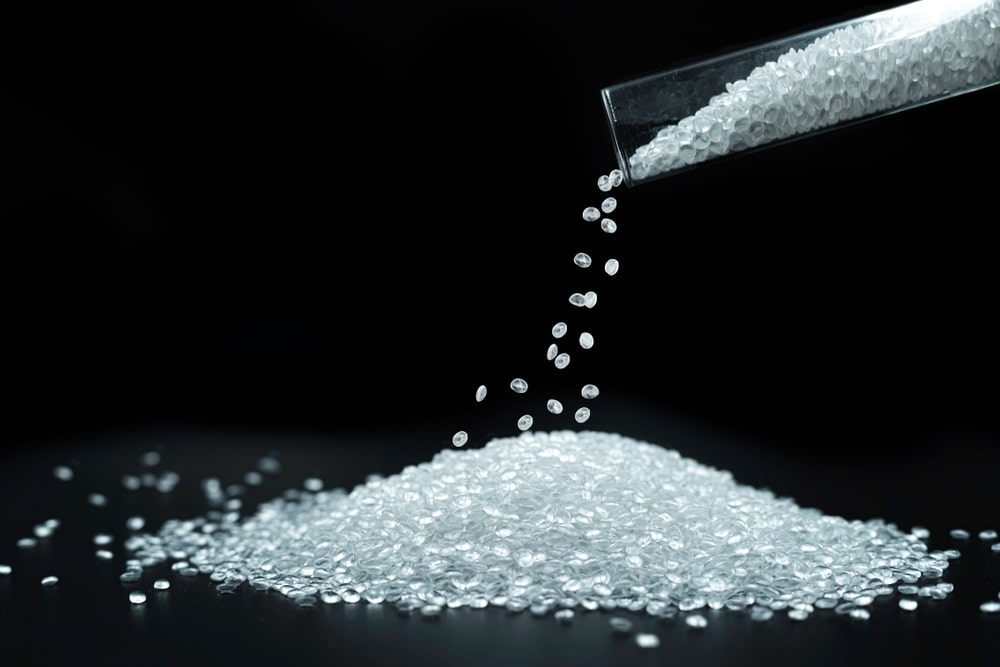Advantages of Polymer: Polymers are compounds with high molecular masses formed by monomers. In Greek, the word poly means ‘many’, and meros means ‘units or parts’. Polymers play a major role in the development of drug delivery technology by the release of two types of drugs; hydrophilic and hydrophobic in a synchronized manner and constant release of formulations over extended periods. There are numerous advantages of polymer acting as an inert carrier to which a drug can be conjugated, for example, the polymer improves the pharmacokinetic and pharmacodynamic properties of biopharmaceuticals through various ways like; plasma half-life, decreases the immunogenicity, build-ups the stability of biopharmaceuticals, improves the solubility of low molecular weight drugs, and has a potential of targeted drug delivery. However, they have their limitations, such as; the natural polymers are most abundant and biodegradable but are difficult to reproduce and purify. Synthetic polymers have high immunogenicity, which prevents their long-term usage. Non-biodegradable polymers are needed to be sugary after they release the drug at the targeted site. The general characteristic features that make the polymer a potential candidate for drug delivery include; safety, efficacy, hydrophilicity, absence of immunogenicity biological inactivity, sufficient pharmacokinetics, and presence of functional groups for covalent conjugation of drugs, targeting moieties or formation of the copolymer.
Characteristics of Ideal Polymer
- Low density.
- Low coefficient of friction.
- Good corrosion resistance.
- Good mould ability.
- Excellent surface finish can be obtained.
- Can be produced with close dimensional tolerances.
- Economical.
- Poor tensile strength.
- Low mechanical properties.
- Poor temperature resistance.
- Can be produced transparent or in different colors.
Advantages of Polymer
- Polymers used in colloidal drug carrier systems, consisting of small particles, show a great advantage in drug delivery systems because of optimized drug loading and releasing the property.
- A polymer (natural or synthetic) is aggregated with a drug in controlled drug delivery and hence it gives an effective and controlled dose of the drug, avoiding overdose.
- The degradable polymers are ruptured into biologically suitable molecules that are assimilated and discarded from the body through the normal route.
- Reservoir-based polymers are advantageous in various ways like it increases the solubility of incompetently soluble drugs and lowering the antagonistic side effects of drugs.
- Magneto-optical polymer-coated and targeted nanoparticles are multimodal (optically and MRI detectable) while Quantum Dots are only optically detectable.
- Some Quantum dots contain Cd which is known to be toxic to humans. Magneto/optical nanoparticles whether polymer-coated or targeted are composed of iron oxides/polymers which are known to be safe, therefore have a great future.
- Dextran is the common polymer used for coating iron oxide (plasma expander and affinity for iron) and are used for the treatment of iron anemias since 1960 and is still in operation.
- In a controlled release, some of the polymers like; polyurethanes for elasticity, polysiloxanes for insulating ability are used for their intended non-biological physical properties.
- Current polymers like; Poly 2-hydroxy ethyl methacrylate, Polyvinyl alcohol, Polyethylene glycol are used because of their inert characteristics and also, they are free of leachable impurities.
- In biodegradable polymers, the system is biocompatible and it will not show dose leaving behind at any time, and the polymer will keep its properties until after exhaustion of the drug.
- In hydrogels like drug delivery systems, the properties of polymer materials like PEG, (the easy polymer used to design hydrogels), can be managed to enhance features like; the size of the pore, which is used to manage the rate of diffusion of the conveyer drugs. PEGylation was considered to minister many diseases like; hepatitis B and C, neutropenia connected with cancer chemotherapy (PEG-GCSF) 28 and various types of cancers [PEG] glutaminase merged with a glutamine anti-metabolite 6-diazo-5- oxo-norleucine (DON].
- Polymers span from their use as films or binders covering agents in tablets to flow managing agents in liquids or emulsions for improving drug security and to alter the delivering characteristics. Micelles due to their smaller size have a small circulation time in the body. Hence, it results in an advantage of entering the tumor cells easily, because of the EPR effect.
- The large importance of polymers in drug delivery has been noticed because they give a distinctive property which so far is not achieved by any of the materials.
- Polymers are preferable in the fact that they habitually show a pharmacokinetic profile as a contrast to small-scale molecule drugs with lengthy circulation time and they also have the ability for tissue targeting.
- Gold nanoparticles are easy to prepare, good capability of co-existence, and can attach with other biomolecules without changing their properties.
- The biggest benefit of utilizing polymers in drug delivery is their control (manipulation) on their properties (e.g. linkers and molecular weight) to modify to the need of drug delivery systems.
Make sure you also check our other amazing Article on : Controlled Drug Delivery Systems
